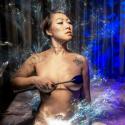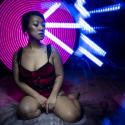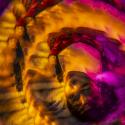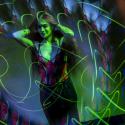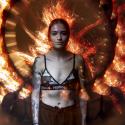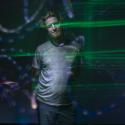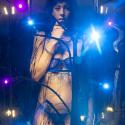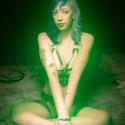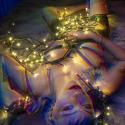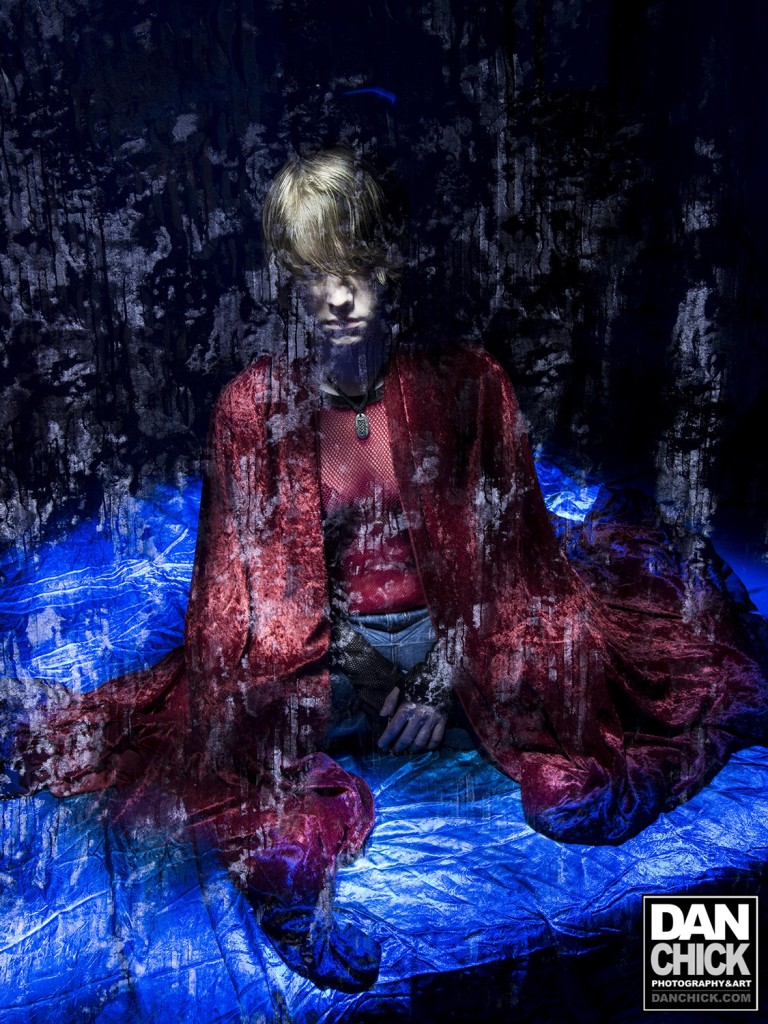Textured Black Fabric
The idea behind this technique was to add a visual texture to an otherwise ordinary light painting shot. I will present a few images that successfully used this technique and discuss how I did them.
One night I was lying in bed and imagined a black fabric that had some sort of reflective or colored pattern on it. The next day I went to JoAnn Fabrics and found this:
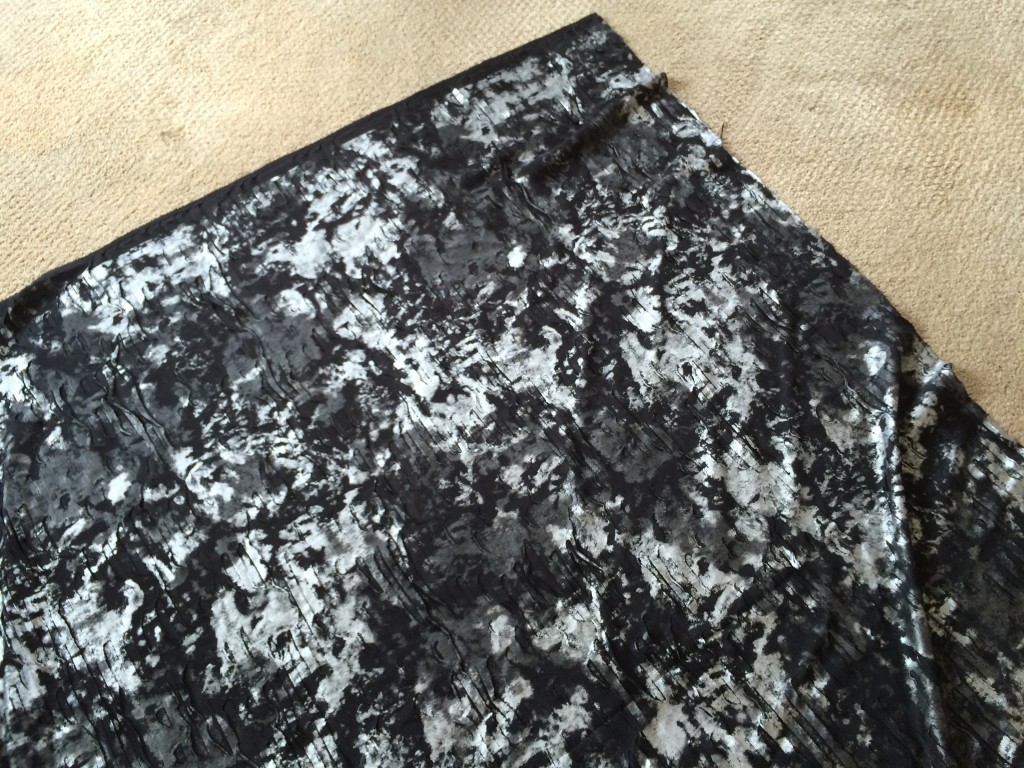
This was precisely what I wanted!
The next time I shot was with Theresa and she indulged my curiosities. The plan was that I was going to try a simple light painting treatment on her, in a dark studio, and before the shot was over she would lift the fabric up in front of the camera and I would pop a handheld flash on it. This was our first attempt, success!
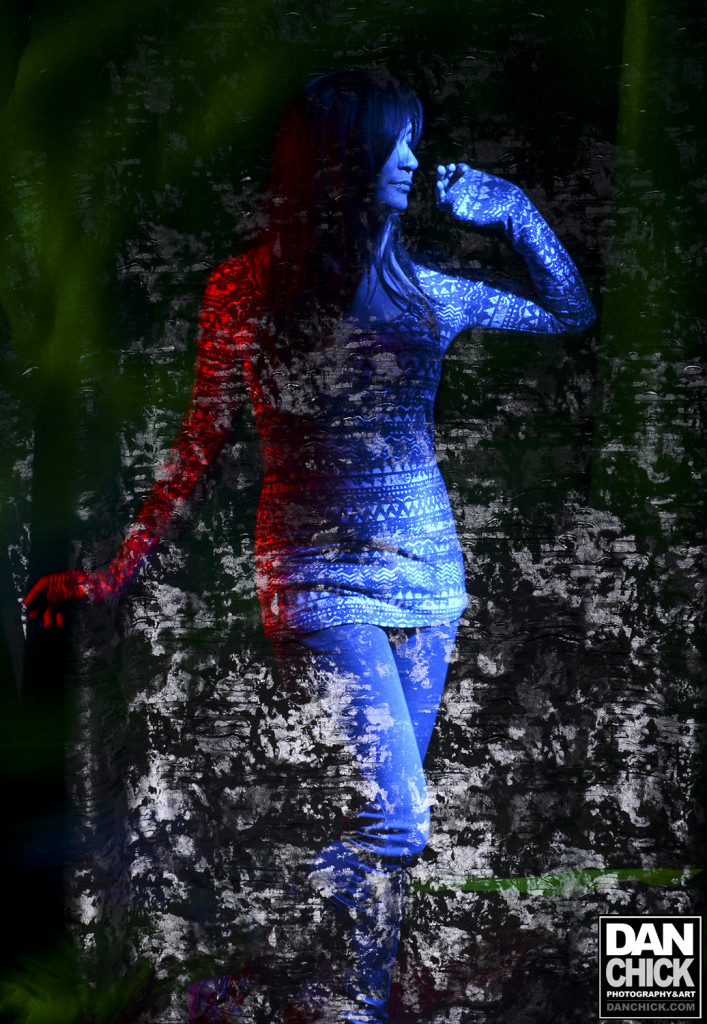
The basic idea is that the camera’s sensor is additive for light. The bright bits are going to expose and be captured, the black is not going to overpower anything that was already exposed in the same sensor pixels. The texture was low, I mis-aimed the flash a bit, but we’re on to something! The next shot took the concept up a notch!
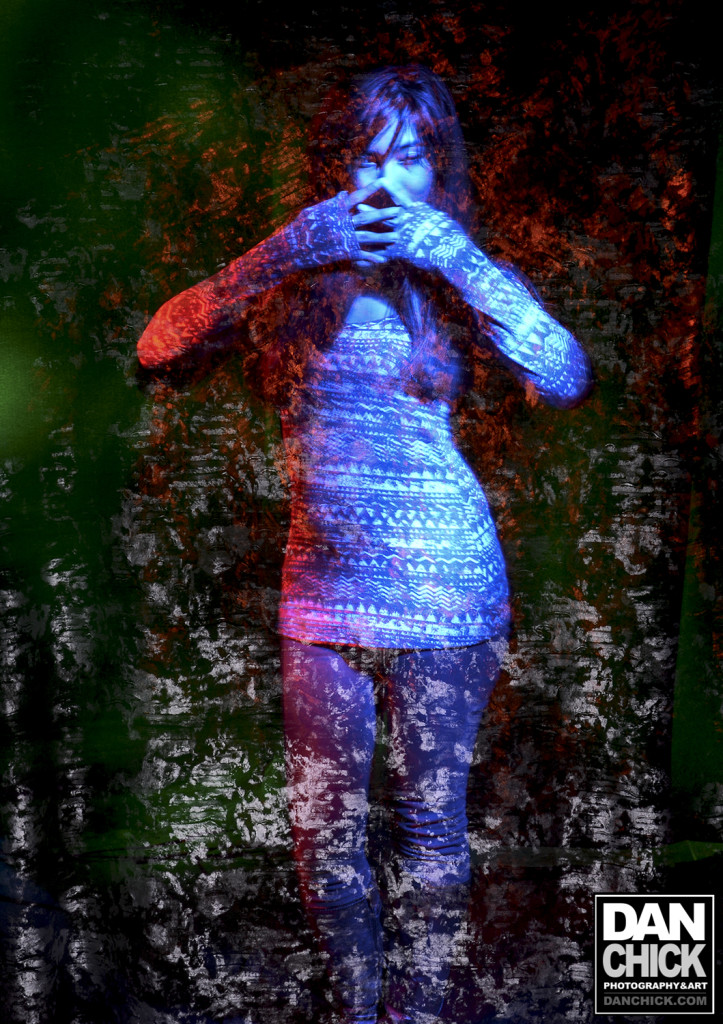
This image involved a blue light on one side of Theresa, a red light on the other side, a flash pop on the raised black-textured fabric, the physical application of an orange lens filter and a second flash pop with the fabric held top right.
A week later I got to shoot with Becca. Here is another sample using the same technique.
Here is another shot with Becca where I had her lying down on the bed, covered with the fabric. I lit the fabric first with a flashlight (selectively), then pulled it off and lit her body. This was a neat way to have the fabric shape to her body while not having to have her move at all between the two parts of the shot.
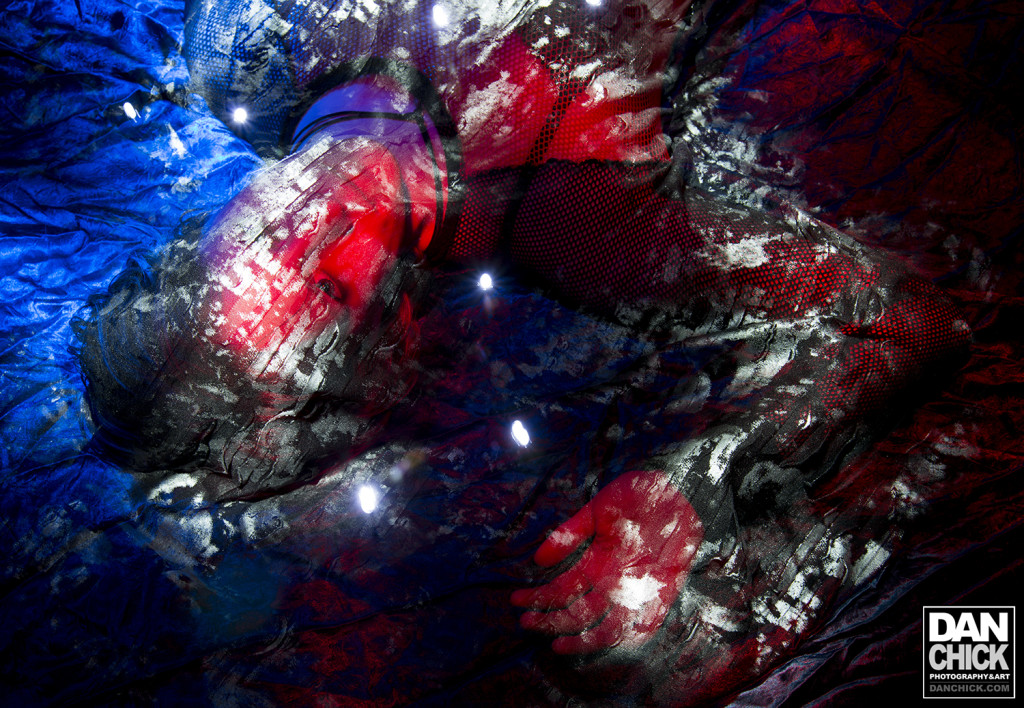
A week after that I decided to try light painting on a white background with Cat. This image is the result of a white background and the same textured light painting technique. Notice that the texture only really shows up on the model since the white from the background is overpowering the white left from the texture.
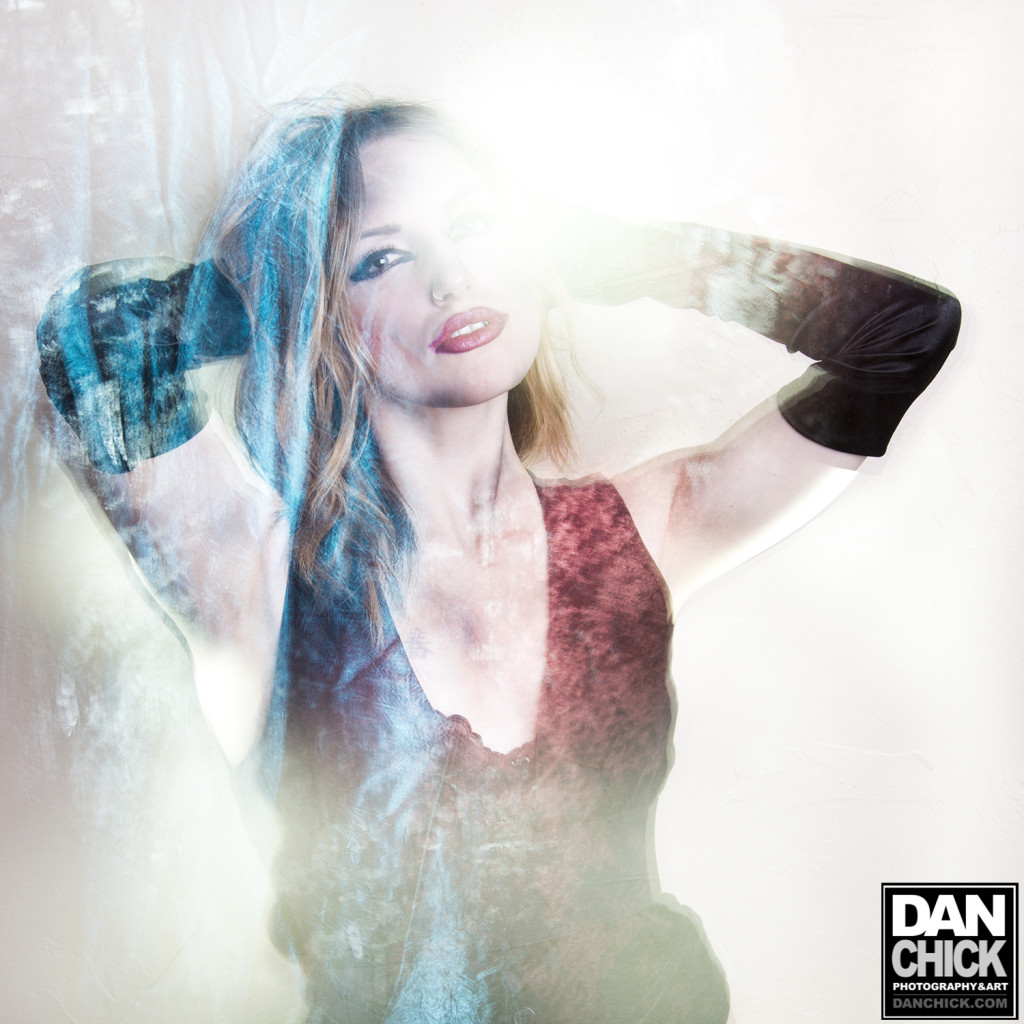
The back was not evenly lit so you can see a little bit of the texture there as well, specifically on the left side and the top left.





